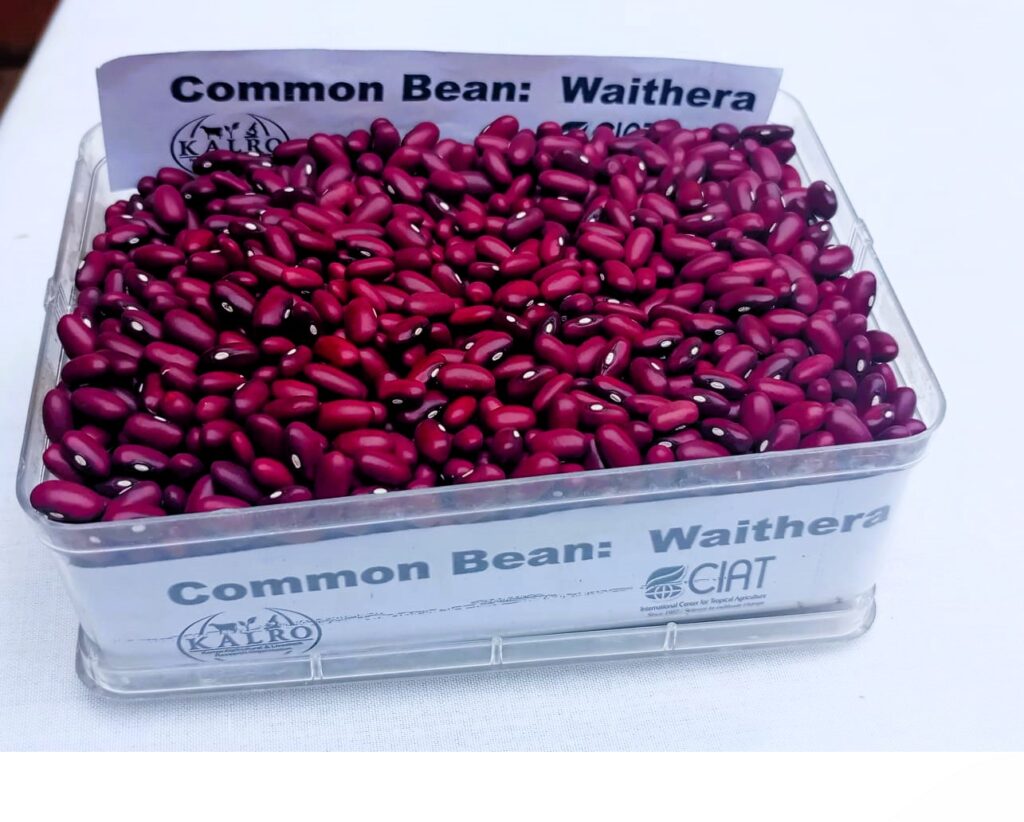A new bean variety, Waithera, is gaining attention among Kenyan farmers for its impressive combination of high yields, drought tolerance, and consumer-friendly qualities. Developed to meet both farmer and market needs, the variety builds on the strengths of the popular Wairimu bean while addressing common concerns such as long cooking time and digestive discomfort.
Waithera beans are sweet-tasting, cook faster, and have a low flatulent level, making them more appealing for household consumption. They are also rich in essential minerals, containing medium levels of zinc and iron, which contribute to improved nutrition. In addition, the variety adapts well to different growing conditions, ensuring that farmers across diverse regions can benefit from it.
The seed distribution strategy for Waithera uses a farmer-led approach. Champion farmers act as distribution hubs, reaching smallholder farmers in remote areas, coordinating bulk seed aggregation for better prices, and handling collection, sorting, weighing, and storage. This method has already proven successful in the spread of the Nyota bean variety, which was introduced in 2021 and is now widely grown.
Field results from pilot programs indicate that Waithera significantly outperforms other varieties in yield. While Nyota produces an average of 26 kilograms from one kilogram of seed, Waithera can yield about 55 kilograms from the same amount. Farmers in different counties, including Nyeri, Nakuru, Bomet, and Elgeyo Marakwet, have reported bumper harvests. Some have more than doubled their yields within a single planting season.
Early adopters have praised the bean for its productivity and taste. Farmers have reported harvesting over 100 kilograms from less than two kilograms of seed, with several noting that the variety’s flavour surpasses that of traditional beans. The crop’s resilience to dry conditions has also made it a preferred option in areas where rainfall is unreliable.
In regions like Bomet, the adoption rate has been especially high, with farming groups coming together to ensure local production before marketing to external buyers. The variety’s structure allows it to keep producing when provided with adequate nutrients and water, giving it an advantage in prolonged growing seasons.
With breeder seed production already completed and basic seed underway, large-scale availability is expected within a year. Given the importance of beans as Kenya’s second most consumed food crop after maize, Waithera’s introduction is poised to increase farmer incomes, improve household nutrition, and enhance national food security.

